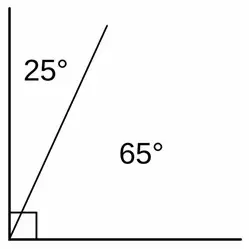More about Yin and Yang

17 August 2023
For reasons sufficient to myself, I created an I Ching hexagram yesterday to settle a question related to a personal matter. The question and the matter is unremarkable – it’s related to family and is irrelevant to the topic of this post. More important is something I read when consulting the I Ching about the hexagram and its commentary.
The I Ching deals with a number of concepts in Chinese cosmology, but principally that of yin and yang. We’ve discussed yin and yang at length in this blog and in class. I consider Yang Jun’s definition of them as “mutually dependent opposites” to be entirely satisfactory. The I Ching, however, added something worth spending more time on, to wit: That yin and yang are not merely opposites but complementary opposites.
I’ve hinted at this before as well, particularly by bringing up Hermann Hesse’s quote in “The Glass Bead Game” – that opposites are not merely “contraries, but two poles of a unity.” In other words, yin and yang are complementary elements of a unified whole.
In tai chi, it’s relatively easy to translate this concept into push-hands, the two partners exchanging yin and yang roles; the “unity” being the act of push-hands itself. Perhaps a better way to express it would be that the “unity” in push hands would be “excellent tai chi.” Picture two tai chi players doing push-hands, with one pushing toward their partner’s center. Yin is the proper response; if the partner pushes back, that’s just struggle and that’s not tai chi. But yin isn’t submission either – if the partner simply collapses, the yang player just pushes the other over. The yin player must act in a complementary way in order to neutralize the yang player’s push, at which point the roles reverse. The yang player becomes yin – whether he or she wants to or not – and must either express good yin energy or risk being drawn off-balance. The yin player becomes yang – again, whether he or she wants to or not – and must express good yang energy or else the partner will continue pressing in, ultimately gaining advantage.
It’s pretty easy to visualize yin and yang with regard to push-hands. It’s more challenging to visualize yin and yang inside each of us. But it’s there all the time – again, whether we want it or not. In each posture and in each transition there are yin and yang elements, inside and around us, and good tai chi requires us to recognize it.
We start with the Essential Principle “Separate Empty and Full.” When we enter into a posture like “Ward Off,” it’s easy to point out which elements of our bodies are empty (back leg, pressing hand etc.) and which are full (weighted leg, warding-off arm etc.), and these naturally correspond to yin and yang. Likewise, when doing “Cloud Hands,” it’s easy to see which hand is yang (the one you’re looking at) and which is yin (the one underneath which is setting up) and so on. Yin and yang are right there, in each of us and we can easily point it out in most postures and transitions. What’s harder yet is to imagine yin and yang actually INSIDE. “Separate Empty and Full” doesn’t just relate to the “external” aspect – the things we can see. It’s intrinsic to the “internal” element of tai chi as well, and that’s where the big payoff is.
I’ve lately encouraged you to actively relax between completing each posture and beginning the transition to the next; and while doing this, many of you discovered that you began to become more aware of the “internal” energy connected with each posture and transition. This is important, because tai chi is an “internal” martial art; we can’t use this “internal” energy or move it around in us until we actually become conscious of it. It’s been there all the time, but we weren’t aware of it. With increased practice and concentration, we become more and more aware of it, and perceive it with greater subtlety – how it feels not only in our torso and legs, but in our arms, our feet and our hands.
At-home practice is an important part of this process. When we can do the solo form without narration or following someone else, it frees our minds up to explore the internal aspects of what we’re doing. Once we start to perceive what the energy in our bodies is doing as we move from posture-to-posture, we learn how to direct it here-and-there at our will, by carefully coordinating our movements to move more efficiently.
Joining this awareness with the movements, we can, in time, direct this internal energy more and more at will. The upshot is that those times when you’ve moved me around “effortlessly,” without knowing how you did it, will now feel like the most natural thing in the world. And those times when I’ve moved you around with an almost mysterious and irresistible ease, will become less mysterious and easier to respond to.
